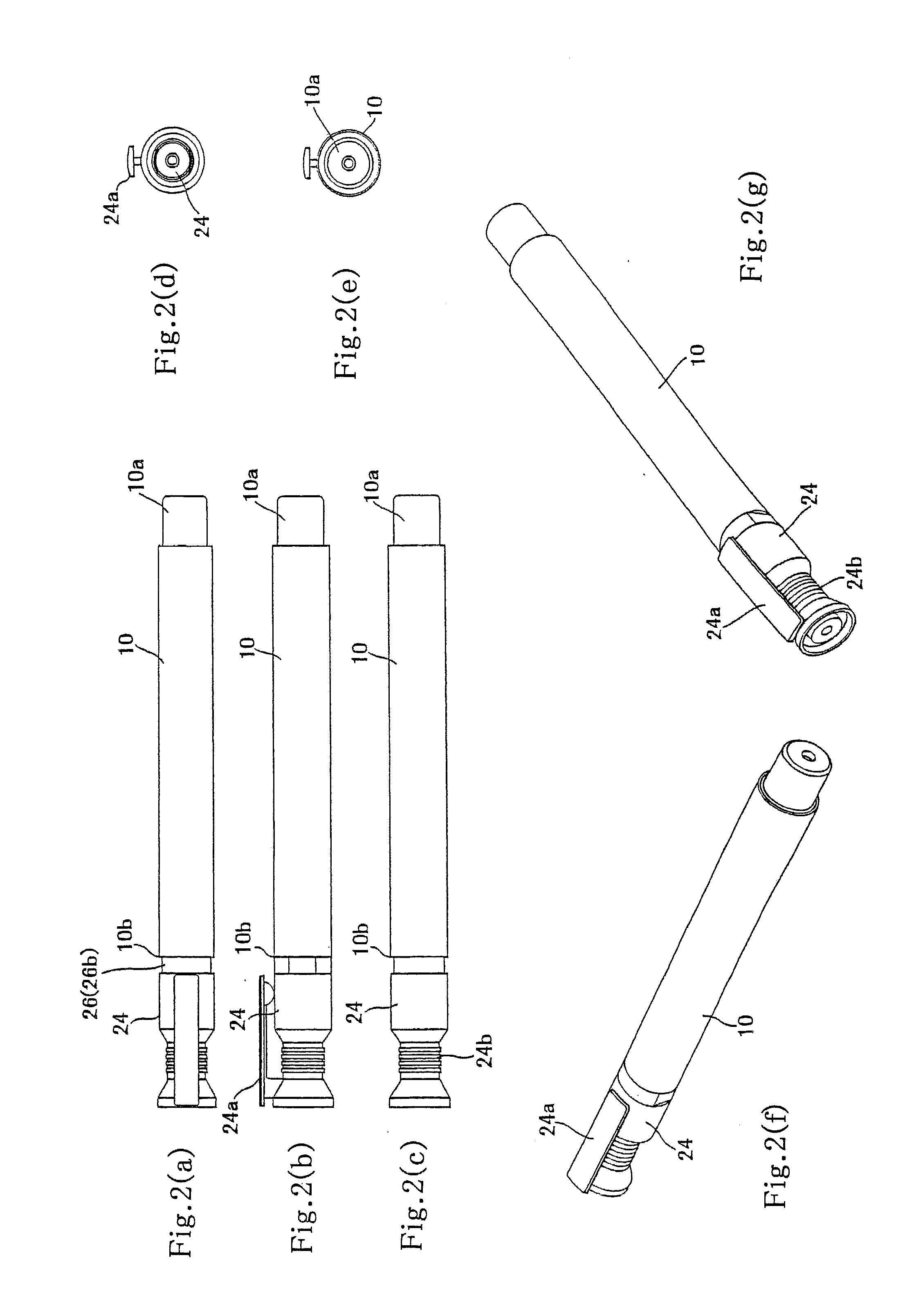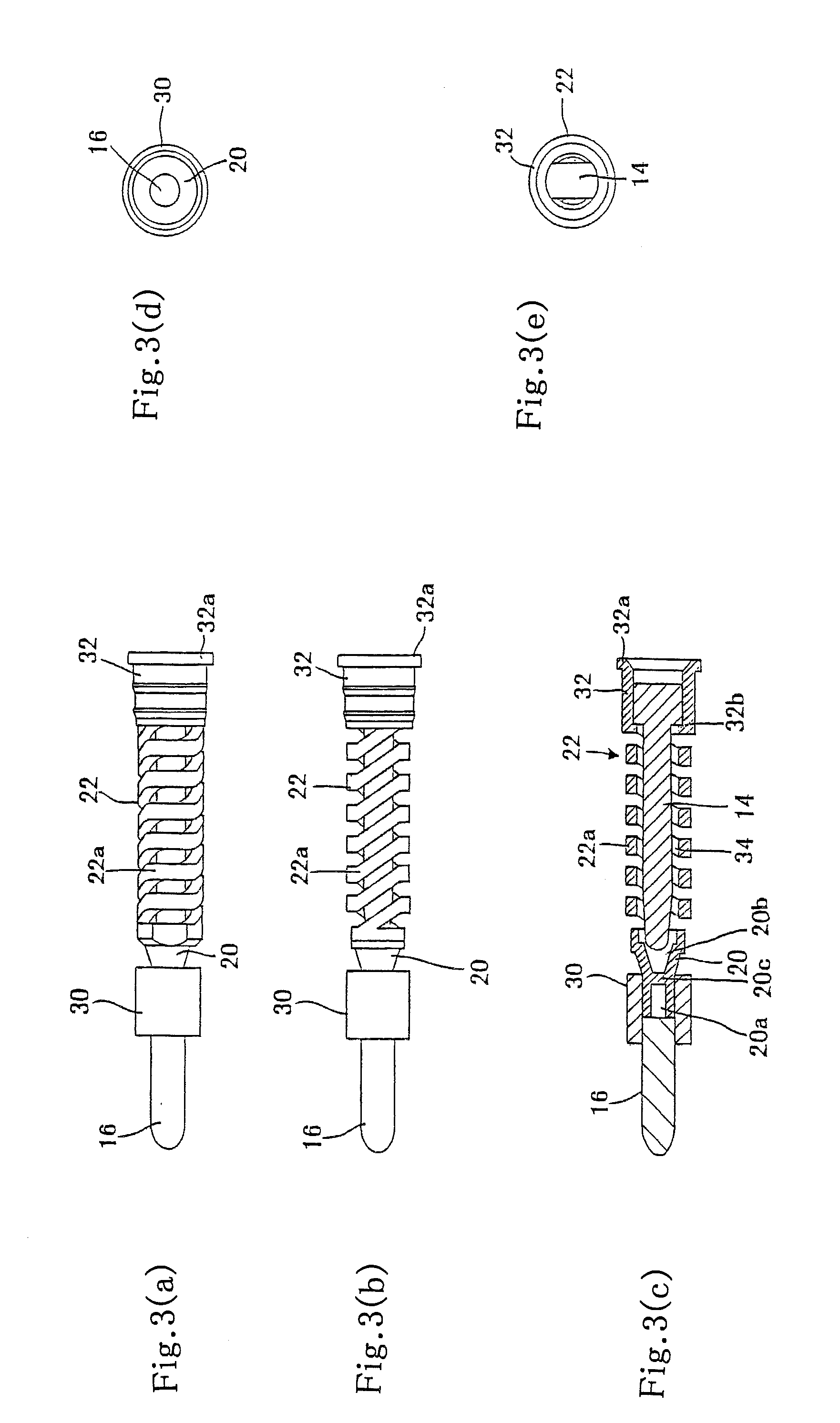Aqueous marking ink composition
a technology of ink composition and water, applied in the field of ink compositions for aqueous marking, can solve the problems of blurred drawn lines, difficult to obtain good drawn lines, and inability to meet all kinds of surface tension of oils (stains) without in the ink composition, and achieves low viscosity, suitable and good wetting properties, and smooth writing.
Inactive Publication Date: 2012-12-13
MITSUBISHI PENCIL CO LTD
View PDF4 Cites 11 Cited by
- Summary
- Abstract
- Description
- Claims
- Application Information
AI Technical Summary
Benefits of technology
[0029]According to the present invention, provided is an aqueous marking ink composition which has a suitable and good wetting property to a non-absorbing surface of metals, resins and the like stained with oil such as a cutting oil and lubricant and can write smoothly thereon at a low viscosity without being repelled and which can provide drawn lines having a high masking property and a high fixing property.
[0030]Further, an aqueous marking ink composition which has a good ink discharge property to make it easy to redisperse the ink by a simple stirring operation even when a masking agent settles down after the passage of time and which is excellent in a masking property and stability is provided by using in combination the second masking agent described in claim 2 which has a specific gravity different from that of titanium oxide.BRIEF EXPLANATION OF THE DRAWINGS
[0031]FIG. 1 is a vertical cross-sectional drawing showing one example of a writing instrument filled with the aqueous ink composition of the present invention for a writing instrument.
[0032]FIG. 2 is a whole explanatory drawing of the writing instrument shown in FIG. 1, wherein (a) is one side view; (b) is a different side view obtained by rotating the above one side view by 90°; (c) is another side view obtained by rotating the different side view by 90°; (d) is a drawing obtained by observing the tip from a cap side in a barrel direction; (e) is a drawing obtained by observing the instrument from a rear end in a barrel direction; (f) is a rear perspective drawing; and (g) is a front perspective drawing.
[0033]FIG. 3 is an explanatory drawing of a device obtained by mounting a pen body (coating body) which is a pen tip and a sponge body on a spring body prepared by integrally molding a valve body which is a valve member on a tip, wherein (a) is one side view; (b) is a different side view; (c) is a vertical cross-sectional drawing; (d) is a drawing obtained by observing the instrument from a front side in a barrel direction; and (e) is a drawing obtained by observing the instrument from a rear side in a barrel direction
Problems solved by technology
The above marking ink composition for an oil-adhered metal surface has a good fixing property as compared with those of conventional ones but has not yet necessarily exerted a sufficiently high fixing property, and since it contains a large amount of a volatile organic solvent, it involves a problem from the viewpoint of a working environment of the users.
In general, however, ink compositions can not meet all kinds (surface tension) of oils (stains) without changing a surface tension thereof.
On the contrary, however, it is estimated as well that the drawn lines shall be blurred, and the existing state is that it is difficult to obtain good drawn lines.
On the other hand, ink compositions for writing instruments containing titanium oxide which is excellent in a masking power have usually a problem in terms of settling down and separating of titanium oxide with the passage of time because of a high specific gravity thereof.
In addition thereto, a problem is involved in the terms that the pigment ink brings about heavy settling down and separation and is inferior in redispersibility.
In the aqueous ink composition for a writing instrument shown in patent document 9 described above, settling and separation at issue are decreased, but a problem is involved in the terms that two kinds of the resin particles are still separated after the passage of time over a long period of time, and when written on a metal surface, a problem is involved as well in the terms that shortage of the masking power is undeniable.
Method used
the structure of the environmentally friendly knitted fabric provided by the present invention; figure 2 Flow chart of the yarn wrapping machine for environmentally friendly knitted fabrics and storage devices; image 3 Is the parameter map of the yarn covering machine
View moreImage
Smart Image Click on the blue labels to locate them in the text.
Smart ImageViewing Examples
Examples
Experimental program
Comparison scheme
Effect test
examples
[0101]Next, the present invention shall be explained in further details with reference to examples and comparative examples, but the present invention shall not be restricted to the examples shown below.
the structure of the environmentally friendly knitted fabric provided by the present invention; figure 2 Flow chart of the yarn wrapping machine for environmentally friendly knitted fabrics and storage devices; image 3 Is the parameter map of the yarn covering machine
Login to View More PUM
| Property | Measurement | Unit |
|---|---|---|
| Temperature | aaaaa | aaaaa |
| Percent by mass | aaaaa | aaaaa |
| Percent by mass | aaaaa | aaaaa |
Login to View More
Abstract
An aqueous marking ink composition that contains at least 1 to 20% by mass of a resin which is water-soluble and has a hydrophobic part in a molecule thereof, a colorant containing at least 5 to 30% by mass of titanium oxide, 0.05 to 2% by mass of at least one selected from acetylene glycols, acetylene alcohols or derivatives thereof, 1 to 20% by mass of a water-soluble solvent having a vapor pressure of 5 mmHg or less at 25° C. and water. The composition can provide good wetting property to a non-absorbing surface of metals, resins and the like stained with oils, can write smoothly thereon at a low viscosity without being repelled to make it possible to obtain drawn lines having a high masking property and a high fixing property, and is readily redispersed by a simple stirring operation.
Description
TECHNICAL FIELD[0001]The present invention relates to an aqueous marking ink composition, wherein it has a suitable and good wetting property to a non-absorbing surface of metals, resins and the like stained with oils such as a cutting oil and a lubricant, and it can write smoothly thereon at a low viscosity without being repelled to make it possible to obtain drawn lines having a high masking property and a high fixing property; further, it has a good ink discharge property and is readily redispersed by a simple stirring operation even when a masking agent settles down after the passage of time, and it is excellent in a masking property and stability.BACKGROUND ART[0002]A lot of aqueous marking ink compositions which can provide good drawn lines on a non-absorbing surface of metals, resins and the like without being repelled have so far been known.[0003]In order to provide, for example, a marking ink composition for an oil-adhered metal surface which can satisfy an identification p...
Claims
the structure of the environmentally friendly knitted fabric provided by the present invention; figure 2 Flow chart of the yarn wrapping machine for environmentally friendly knitted fabrics and storage devices; image 3 Is the parameter map of the yarn covering machine
Login to View More Application Information
Patent Timeline
 Login to View More
Login to View More IPC IPC(8): C09D11/16B82Y30/00C09D11/00C09D11/17
CPCC09D11/17G03F1/0023C09D11/18C09D11/16
Inventor IWASA, ATSUSHITOI, YOKOFUJIWARA, YOSHIHITO
Owner MITSUBISHI PENCIL CO LTD
Features
- Generate Ideas
- Intellectual Property
- Life Sciences
- Materials
- Tech Scout
Why Patsnap Eureka
- Unparalleled Data Quality
- Higher Quality Content
- 60% Fewer Hallucinations
Social media
Patsnap Eureka Blog
Learn More Browse by: Latest US Patents, China's latest patents, Technical Efficacy Thesaurus, Application Domain, Technology Topic, Popular Technical Reports.
© 2025 PatSnap. All rights reserved.Legal|Privacy policy|Modern Slavery Act Transparency Statement|Sitemap|About US| Contact US: help@patsnap.com



